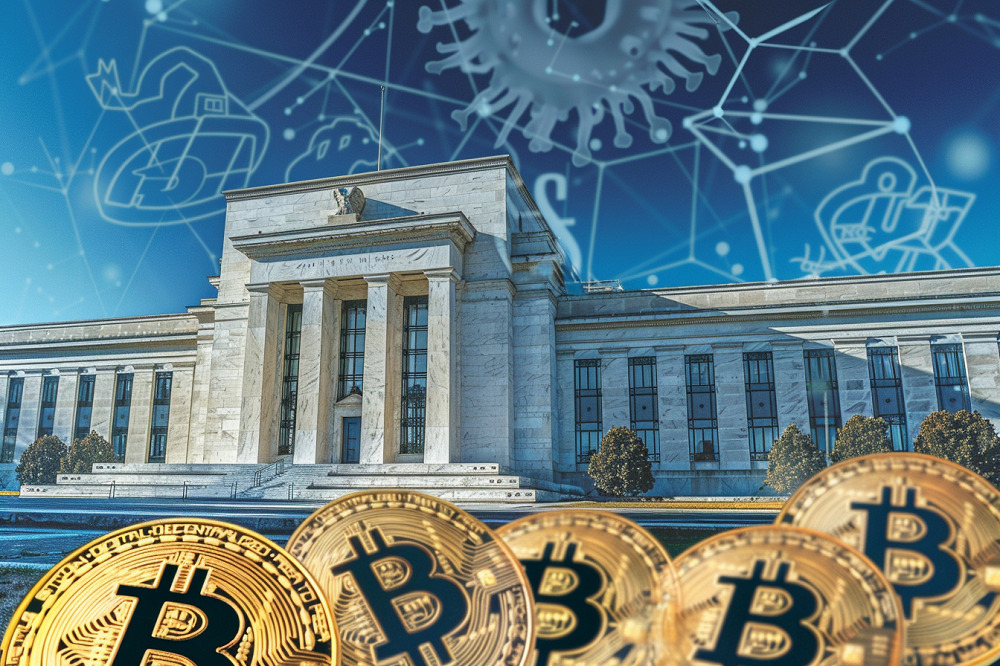Few entities wield as much influence as the United States Federal Reserve (the Fed) within the finance sector. With its crucial role in setting interest rates, the Fed holds the power to sway economic tides, affecting all financial markets, including the volatile cryptocurrency market.
Let’s look at the historical journey where Fed decisions have reverberated across the crypto ecosystem.
2018: The Crypto Winter
In 2018, the crypto market experienced what would later be termed the “crypto winter,” a period marked by a dramatic price downturn and investor sentiment. This period unfolded against the Federal Reserve’s interest rate hikes under Chair Janet Yellen.
As the Fed sought to curb inflation concerns through a series of interest rate increases, it caused a downturn in the financial markets, including crypto. The timing couldn’t have been worse for the cryptocurrency market, which was already struggling with regulatory uncertainties and security breaches on many crypto exchanges.
After reaching an all-time high of nearly $20,000 in December 2017, Bitcoin’s price plummeted to around $3,200 by December 2018, a loss of over 80%. This sharp decline eroded investor confidence, triggering a mass exodus from digital assets.
While the crypto winter cannot be solely attributed to the Fed’s interest rate decisions, they exacerbated the prevailing market conditions. The tightened monetary policies heightened risk aversion among investors, prompting them to flee from volatile assets like cryptocurrencies in favor of traditional financial havens.
2021: A Tale Of Two Extremes
Three years later, still feeling the effects of the COVID-19 pandemic, the Fed lowered interest rates and injected liquidity into financial markets. This monetary policy affected Bitcoin positively, causing it to reach an all-time high of over $68,000 in November 2021.
However, the Fed hinted at tightening measures to rein in the economy due to mounting inflationary pressures. This hawkish stance triggered a significant correction, and by June 2022, Bitcoin had shed over 70% of its value, trading below $20,000.
The Dynamics At Play
The dynamics between Federal Reserve interest rates and cryptocurrencies reflect the delicate balance of market forces and investor sentiment. When the Fed maintains low interest rates, it reduces the cost of borrowing and encourages spending and investment.
Traditional safe-haven assets like bonds and savings accounts offer minimal returns in such an environment. This prompts investors to seek higher yields in riskier assets, particularly cryptocurrencies.
The allure of potential high returns drives up demand for digital assets, leading to price appreciation across the crypto market. Conversely, safer investments become more attractive when the Fed signals a tightening of monetary policy by raising interest rates rather than holding cryptocurrencies.
Thus, investors often opt to reallocate their funds to traditional assets with guaranteed returns, causing a decline in demand for cryptocurrencies and subsequent price corrections. Furthermore, interest rates impact the mechanics of leveraged trading.
Thus, investors often leverage their positions in cryptocurrencies to make more profits in a low-interest-rate environment. However, the cost of servicing these leveraged positions increases with interest rates.
Thus, investors resort to margin calls, forcing them to liquidate their holdings. This selling pressure exacerbates price declines and contributes to market volatility. Regulatory developments, technological advancements, and geopolitical events significantly shape market dynamics.
For instance, regulatory crackdowns or advancements in blockchain technology can influence investor sentiment and market behavior.
Conclusion
As digital assets continue to gain mainstream adoption, their dynamics may become increasingly decoupled from traditional market forces. Regulatory developments, technological advancements, and investor sentiment shifts could significantly influence crypto prices, independent of Fed interest rate decisions.
Moreover, the interplay between inflationary pressures and cryptocurrencies as an inflation hedge adds another layer of complexity. While rising interest rates may dampen investor appetite for riskier assets in the short term, persistent inflation concerns could drive demand for cryptocurrencies with limited supplies, such as Bitcoin, as a store of value.
